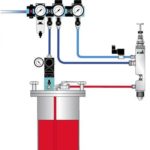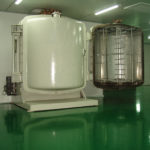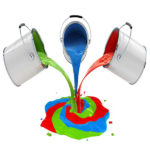Overview of coatings
Coatings are complex chemical mixtures. Generally speaking, coatings are mainly composed of primary, secondary and auxiliary film-forming substances. The main film-forming material is an indispensable part of the coating, which plays a leading role in the performance characteristics of the coating layer. Secondary film-forming substances refer to various pigments, fillers, which cannot be filmed alone, but are important components that make up the layer and affect their properties. Anancillary film formers include solvents and many other additives that improve the properties of coatings and coatings.
Classification of paints
- According to the state of the coating: powder coating and liquid coating;
- According to gloss: glossy paint, flat paint and matte paint;
- According to the drying method: self-drying paint, baking paint, infrared drying paint and ultraviolet drying paint (i.e., UV paint);
- According to the use of paint: plastic paint, ceramic paint, Polly paint, etc.;
- According to the resin composition of paint: alkyd resin coating, amino resin coating, nitro coating, cellulose coating, perchloroethylene coating, polyurethane coating, elemental organic coating, rubber paint, grease coating, acrylic resin coating, epoxy resin coating, asphalt coating, etc.
Coatings for Spraying
Acrylic resin coating is mainly modified acrylic resin film-forming, which can be divided into three categories: thermoplastic and thermosetting acrylic and acrylic latex paint, with one-component coating and solvent volatilization;There are also and other resins fixed and dried.
Advantages: light color of the coating film, alkali resistance, weather resistance, good corrosion resistance, good adhesion, and several sizes of decoration.It is made of two-component coating with polyurethane and has excellent weather resistance.
Weakness: Poor solvent resistance of one-component coatings, poor curing analysis, poor resistance to moisture and heat, and high cost. Two-component coatings are expensive and require high substrate treatment.
Polyurethane coatings, the full name of polyurethane coatings, have more than 60 varieties of one-component polyurethane, one-component moisture-curing polyurethane, one-component closed polyurethane, two-component catalytic type, two-component hydroxyl curing type, etc., which can be self-drying or drying.
Advantages: wear-resistant, good decorative performance, strong adhesion, good chemical resistance, some varieties can be cured under moisture performance, good insulation performance, excellent weather resistance of the topcoat.
Weakness: harsh production and storage conditions, sometimes poor interlayer adhesion.Aromatic products are yellowed for outdoor use, with high prices and high substrate treatment requirements.




